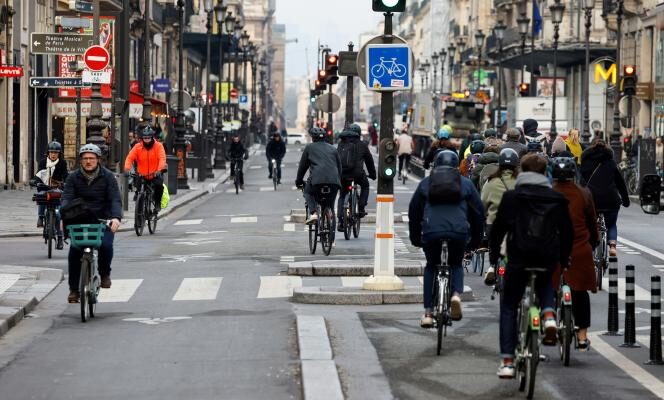MObviously, the government finds it much more consensual to encourage cycling than to oppose motorway projects. No less than six ministers, including the first of them, took turns on Friday, May 5, to praise the benefits of “active mobility”during the first cycling and walking interministerial committee, which was held at the Ministry of Ecology. The investments announced, 2 billion euros budgeted by the State by 2027, exceed all that had been released so far.
In September 2018, the date of the first national “bicycle plan”, the sums promised only reached 350 million euros for seven years. This money was not spent in vain: the share of the bicycle in travel, which had jumped after the first confinements, further increased by 8% in 2022 compared to 2021, according to the association of elected officials Vélo and territories.
The Federation of Bicycle Users (FUB), with its 500 local associations, continues to benefit from the excellent relations forged by its president, Olivier Schneider, with Elisabeth Borne, when the latter was Minister of Transport, between 2017 and 2019.
“For several years, France has started a policy of visible catch-up. Now there are billions”, comments Annie-Claude Thiolat, vice-president of the FUB. However, it specifies that with 6 billion euros – the 2 billion announced by the State in addition to the 4 billion financed by local authorities –, “France remains below the 30 euros per year and per inhabitant recommended by a study by the French Environment and Energy Management Agency [Ademe] of 2019 ».
Part of the network is “totally to be redone”
The State will thus contribute to financing aid for the purchase of bicycles, linear cycle paths or footbridges and underground passages, “whose cost may exceed 5 million euros”observes Florian Le Villain, consultant for Solcy, a consulting firm in town planning and cycling policy.
The government hopes in particular to increase the total length of cycle paths from 57,000 kilometers today, including 17,000 developed since 2017, to 80,000. However, a good part of the existing network “is totally to be redone”deplores Olivier Schneider, who cites the tracks materialized on a sidewalk, those which stop abruptly at a crossroads, or others, made impassable by the roots of trees.
Concretely, notes Florian Le Villain, the obstacles remain numerous. “In the local authorities, overworked project managers tell us that they don’t have time to take care of a development”he underlines, giving the example of a rural community of 30,000 inhabitants, in Brittany, which has undertaken to mark out the routes using road signs. “It’s meticulous work and not very rewarding, but essential for the inhabitants to use the route in their daily journeys. »
You have 42.6% of this article left to read. The following is for subscribers only.
